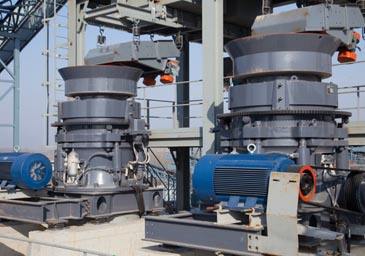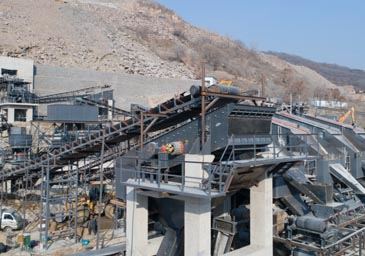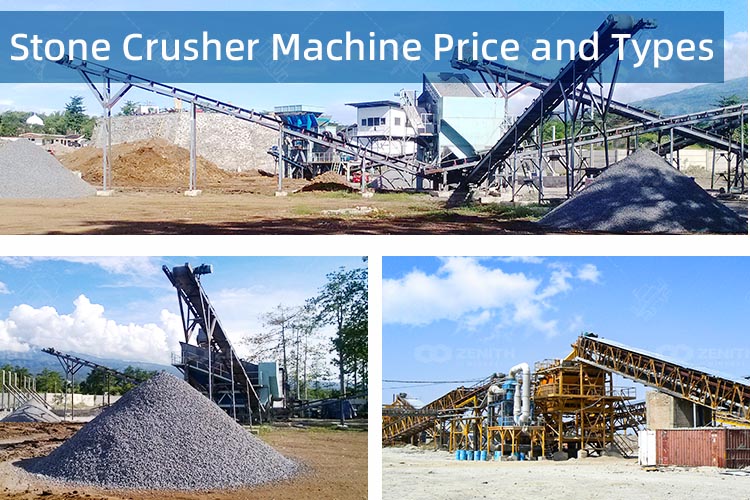Mechanized crushing has a history of 150 years. Despite the subtle differences between the equipment, in the end, they all have the same goal: to reduce the size of the rock-of course, to supply a variety of products to the market, such as gravel for construction or iron ore for the steel industry . For these unique needs, different types of crushers bring the best results.



Each crushing location and operation are different, so the choice of crusher depends on the ideal size of the material to be processed and the final product. The choice may seem difficult, but fortunately, there are tools and software that can simplify the weighting of different options and help make decisions. The core of all these analyses is careful calculation, taking into account the capabilities and limitations of different crushers and operating requirements. This includes combining theoretical conclusions with practical economic experience of different materials, operating conditions, maintenance requirements, and various alternatives. Simply put, it is to determine which technology is most suitable for the product with the least production phase.
All rock crushers can be divided into two categories. The compression crusher compresses the material until it is crushed, and the impact crusher uses the principle of rapid impact to crush the material. Jaw crushers, rotary crushers and cone crushers operate according to the principle of compression. In turn, impact crushers use the impact principle. Another way to classify equipment is to classify the equipment according to the stage of the equipment in the processing process. For example, jaw or rotary crushers in primary crushing and cone crushers in secondary crushing.
The earliest invented crusher is a jaw crusher, which is manufactured to reduce the size of large materials and operate with high capacity in primary crushing. Their main purpose is to reduce the material to a small enough size so that it can be transported to the next crushing stage via a conveyor. Jaw crushers can also be successfully used in recycling operations. The mechanical structure is simple, easy to install and maintain.
As the name implies, the jaw crusher crushes rocks and other materials between a fixed jaw and a moving jaw. The movable jaw is installed on the reciprocating steering arm, and the fixed jaw remains unchanged. When the material flows between the two jaws, the jaws compress the larger boulders into smaller fragments.
Jaw crushers can be divided into two basic types, single elbow and double elbow. In a single elbow jaw crusher, the eccentric shaft is located on the top of the crusher. The rotation of the shaft and the toggle plate together produce compression. The double elbow crusher has two shafts and two toggle plates. The first shaft is the pivot on the top of the crusher, while the other shaft is the eccentric shaft that drives the two toggle plates. The chewing movement produces compression during the feeding and discharging of the material. Compared with the double elbow jaws of similar size, the single elbow jaw has a better load-bearing capacity.
Another type of crusher often used in the initial crushing stage is a rotary crusher with a swing shaft. The material is restored in the crushing cavity between the external fixed element, the bowl liner, the internal moving element installed on the swing shaft assembly, and the outer jacket. Material fragmentation is caused by continuous compression between the liners around the chamber. There will be additional crushing effects between the compressed particles, thereby reducing the wear of the lining. The rotary crusher is equipped with a hydraulic setting adjustment system, which can adjust the gradation of crushed materials.
From a technical point of view, the cone crusher is similar to the rotary crusher, but different from the rotary crusher, the cone crusher is very popular in the secondary, tertiary and fourth-level crushing stages. However, sometimes, the particle size of the processed material is inherently small enough that the traditional initial crushing stage is not required. In these cases, the cone crusher can also perform the first stage of the crushing process.
The cone crusher is equipped with a hydraulic setting adjustment system, which can adjust the closed side setting, thereby affecting the product gradation. Depending on the cone crusher, the settings can be adjusted in two ways. The first method is to adjust the setting by rotating the bowl against the thread, thereby changing the vertical position of the concave surface of the external wear part. One advantage of this type of adjustment is that the bush wears more evenly. Another principle is to set adjustments by raising or lowering the spindle. The advantage of this is that it can be adjusted continuously under load.
In order to optimize operating costs and improve product shape, it is recommended that the cone crusher always adopt throttling feed, which means that the cavity should be filled with rock material as much as possible. This can be easily achieved by using stockpiles or silos to adjust the inevitable fluctuations in the feed flow. The liquid level monitoring device detects the highest and lowest liquid levels of the material, and starts and stops feeding to the crusher as required.
The impact crusher uses the principle of rapid impact to crush materials and can be used in any stage of the crushing process. However, the characteristics and performance of different types of impact crushers vary greatly.
Traditionally, impact crushers are divided into two main types, horizontal axis impact (HSI) crushers and vertical axis impact (VSI) crushers. These different types of impact crushers have the same crushing principle, that is, impact crushers can reduce materials to smaller sizes, but their characteristics, capacities and best applications are far from each other.
The horizontal axis impact crusher is used in the primary, secondary or tertiary crushing stage. They reduce the feed through the high-strength impact generated by the rapid rotating motion of a hammer or rod fixed on the rotor. Then, the produced particles are further broken inside the crusher because they collide with the crusher chamber to produce a finer and better-shaped product.
On the other hand, vertical shaft impact crushers are used in the final stage of the crushing process, especially when the final product is required to have a precise cube shape. The VSI crusher can be regarded as a "stone pump", which operates in a manner similar to a centrifugal pump. The material is transported through the center of the rotor, accelerated to a high speed at the center of the rotor, and then discharged through the opening on the periphery of the rotor. As the rocks collide with each other, the material is crushed when it hits an external object at high speed.
In the past few decades, the development of crushers has led to a reduction in costs, an increase in output, and an increase in energy efficiency. In practice, this means that the installation of the rotary crusher is easier, the capacity is larger, and the production capacity and lubrication system of the jaw crusher are improved. On the contrary, cone crushers have become more and more automated and are no longer limited to processing hard rock.
Computer simulation uses the real data of ore or rock to improve the selection of the model, and automatically corrects and adjusts the crushing operation in real time every day. Although hardware has been greatly developed, software determines the development of today's world.

There are many types of stone crusher machines on the market. In this article, we will introduce the types and price of the stone crusher and how to select the most suitable one.

Crushing and screening equipment is widely used in the construction of highways, construction, water conservancy, mining, ports and other fields for processing and producing various specifications of crushed stone and sand.

Stone crusher for coarse crushing is an important driving force for the success of aggregate processing plant. Here are the tips to choose the most suitable coa
Fill your requirements here, and we'll send the custmized solution and quotation to you by the reserved contact information.